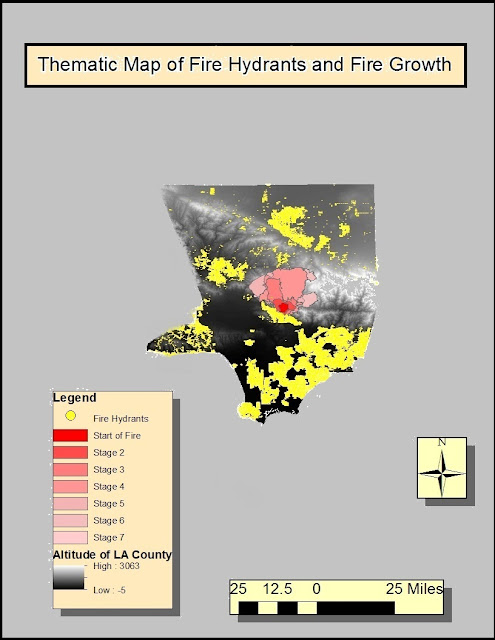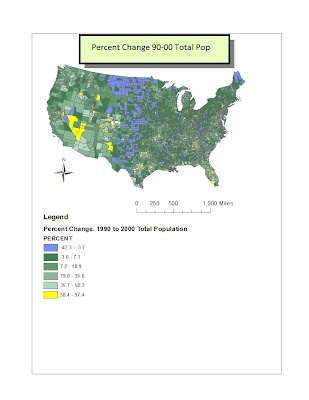The Effectiveness of Fire Hydrants
This report will display the effectiveness that fire hydrants and firemen have on containing fires. This particular case is the Station fire in LA County in August and September of 2009. This fire was located just North of San Fernando and east of Santa Clarita and threatened the both community's. Arson was expected to be the cause, and the fire later lead to the death of two firefighters.
Our first map shows the area the fire affected the Angeles National Forest. its beginning stages started north of San Fernando and keep moving northward. This "reference map" shows the first six stages of the fire and its expansion outward.The deepest red represents the initial stage, followed by lighter shades. The lighter shades do not suggest the fire weakening, it only represents the area as a time lapse. For reference, the 14, 210, 5, 101 and 118 freeways are included in the map as well as notes for Santa Clarita and San Fernando.
A major element of stopping a fire is the use of fire Hydrants. Before plotting the specific locations for new fire hydrants, the fire chief or his/her delegated authority must be consulted to ensure that all operational and practical issues have been considered prior to final placement of hydrants. This is a strategy of containment that can be observed through ArcGIS.

The above map displays the fire hydrants in the LA County as well as the growth of the fire. Again, the initial onset and the stages of the fire appear here, but now we can see the placement of Fire hydrants installed by the LAFD. the northern portion of San Fernando is covered with the Hydrants.
We can see the effectiveness of the fire department here in the virtual wall of hydrants that have stopped the fire from proceeding into the city. Donna Barstow,a commentator of the 2009 Station fire, mentions how crucial it is for firehydranst to be operational near fires. She writes, "'we don’t chase fires, we just contain it.' And since they don’t have any large off-road fire trucks, their range is limited to the length of the hoses: only 300 to 500 feet!" Looking at the spread of the fire over time, we can infer that the fire hydrants played a crucial roll at containing the fire and keeping firefighters on the front lines.
----
Work Cited
Smith, Tim J. "Los Angeles County Fire Hydrant Layer." Map. Los Angeles County GIS Data Portal. LARIAC, 23 May 2012. Web.
Franchino, Nick. "Freeways (Single Line for Labels)." Map. Los Angeles County GIS Data Portal. Los Angeles County Regional Planning Department, 20 Jan. 2011. Web.
LAFD Staff. "LAFD Construction Services - Hydrants and Access Unit." LAFD Construction Services - Hydrants and Access Unit. LAFD, n.d. Web.
Barstow, Donna. "Griffith Park Blog." Griffith Park Blog RSS. WordPress, 2 Sept. 2009. Web.
Winton, Richard. "L.A. NOW." Substance Found near Station Fire Ignition Point Is Key Evidence in Arson Probe [Updated]. LA Times, 4 Sept. 2009. Web.









